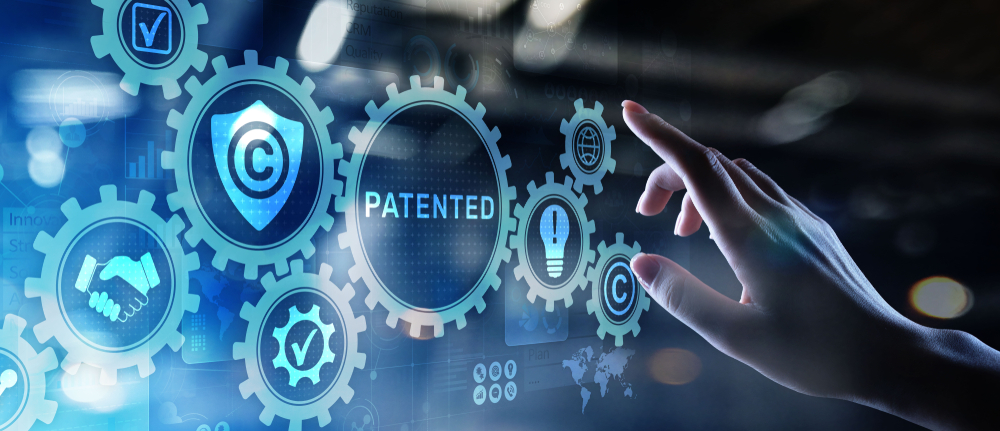
If you have a novel idea, it makes sense to protect it. The term medical device covers any type of instrument used to diagnose, manage, or treat a medical condition. It’s a multi-billion-dollar industry covering everything from tongue depressors to insulin pumps and pacemakers. As the digital transformation shapes the future of healthcare, medical devices are becoming more capable and innovative.

If you’re getting in on the research and development action with your medical device, the question about patenting your device will come up sooner or later. Medical devices can and should be patented to protect your investments, and here’s everything you need to know about the process. Medical device patents are a method for legally protecting discoveries and innovations.
What Does a Medical Device Patent Do?
Companies and inventors file for patents to protect themselves from infringement or the unauthorized use of their designs or technology. This provides a layer of protection for financial losses that might occur if another company swooped in and stole plans for a device, allowing them to capitalize on the work that the original company has done.
A device patent does not authorize the inventor to sell the device. There are several more steps to getting a new device approved and on the market. The patent is about protecting intellectual property during research and development.
Related: 3 Medical Device Startups to Look Out For
Why are Patents Necessary for Medical Devices?
Developing a novel medical device takes a lot of time and money, and a patent provides some protection during development. The US Patent and Trademark Office (USPTO) says that more than 20,000 patents are granted each year. And with the rapid advancements in technology, that number continues to grow year after year.

The cost of getting a patent alone is a big investment and can take up to 36 months from the application date until the patent is granted. But it can all be worthwhile. Litigating patent claims can also be expensive, but the payouts can be millions for patent infringement.
Types of Medical Patents
Not all patents are the same, but they will generally fall into one of these categories:
- Utility Patent
- Provisional Patent
- Design Patent
- Plant Patent
A utility patent is the most common. This type of non-provisional patent is used to protect the essential technology that makes a particular device work. Up to 90% of all US patents are utility patents. These patents can be used for a novel product, process, machine, or technology useful to the medical community.
A provisional patent may be granted if you are the first file. This type of patent essentially buys you a little extra time to file your patent without losing your spot in line. A provisional patent is typically good for one year.

A design patent covers the device’s physical appearance but does not cover the technology that makes it work, and the latter is covered by a utility patent. Design patents are used for distinctive features, user interface design, and touchscreens.
These three patents are the most common. However, there is one patent lesser-known outside of agriculture. A plant patent exists to protect a novel plant species developed through engineering.
Related: Potential Benefit vs Potential Risk
Global Strategic Solutions offers consultancy for clinical risk management. We’re committed to helping ensure safety in the medical field. Contact us to learn more about our services today.
How to Get a Medical Device Patent
The process of getting a patent is tedious. But the potential protection versus the potential losses without a patent often makes it worth the effort. There are eight steps to obtaining a patent.
- Identify a Need
- Determine if your Invention Qualifies
- Pick the Appropriate Patent Type
- Prepare the Application
- Submit the Application
- Cooperate with the Examiner
- Receive Approval
- Meet Maintenance Requirements
The first step in obtaining a medical device patent begins by identifying the need to patent your invention. A patent is only one type of protection, and it may not be the most appropriate depending on what you are trying to protect. Copyrights, trademarks, and service marks are all additional types of protections to explore.

Once you have decided that a patent will offer the best protection, the next step is to determine eligibility to be patented. While your idea may be great, prior patents and publications by others for a similar device may prevent you from obtaining a patent for your device. You can begin by conducting a public search of the USPTO database.
Related: 6 Ways to Collect Clinical Data
If you’ve done your homework and determined that your invention is indeed novel and eligible for a patent, you can begin taking steps to file your paperwork. This means choosing the right type of patent, and a non-provisional or utility patent is the most common.
The next step involves obtaining your application and collecting all necessary supporting documentation. It is imperative that you read all instructions carefully. Silly little rules like choosing acceptable fonts can derail your patent application.

The process can vary, but most applications require a written explanation, drawings, patent search, and an oath of authenticity. And, of course, there will be fees to pay that cover the administrative work of processing your patent. Assistance from a patent attorney is highly recommended.
Once your patent is filed, it will be assigned to an examiner who essentially processes the patent request. The examiner may or may not have additional questions. If they reach out during the examination process, it is imperative to provide any requested information in a timely manner.
Once your patent is approved, you’ll get to pay more fees. And that’s just the beginning. You will continue to pay maintenance fees on your patent as well as retainers for your patent attorney to handle any infringement claims that might arise during the time that you hold the patent.
The Bottom Line on Medical Device Patents
 Patents are a type of protection that covers inventions like medical devices. They can protect the technology (utility) or design of a medical device so that your competition cannot steal your technology out from underneath you. The process of research and development can take years and cost millions. In most cases, patent protections are a smart decision.
Patents are a type of protection that covers inventions like medical devices. They can protect the technology (utility) or design of a medical device so that your competition cannot steal your technology out from underneath you. The process of research and development can take years and cost millions. In most cases, patent protections are a smart decision.
If you need help with patent searches, Global Strategic Solutions, LLC can help.
Global Strategic Solutions is your partner for risk management. Our approach includes statistically sound surveys, performance studies, use of registries, clinical trials, and more to collect data for evidence-based risk management. Learn more today.

